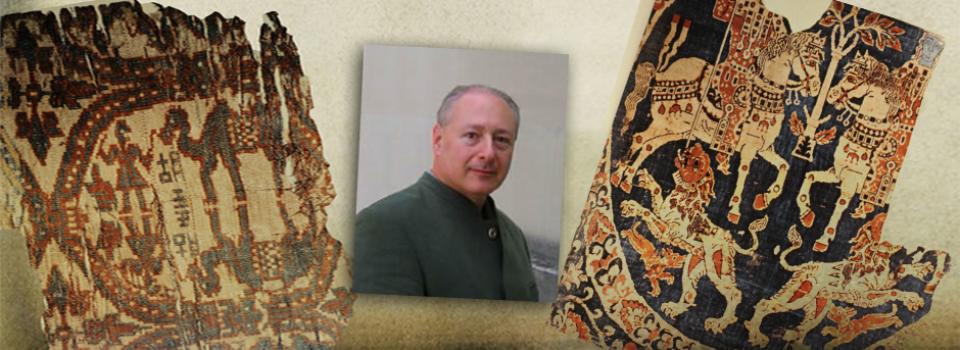
Despite its vastness, the Eurasian landmass has proved, even in premodern times, to be easily bridged by cultural and artistic diffusion. This lecture will focus on the first millennium C.E., and on two artistic developments of continent-wide significance.The first is the evolution of medallion-based ornamental patterns in the Roman Empire, and their transmission across Eurasia as far as China and Japan by the 8th century. The second is the spread of Greco-Roman sculptural styles to South-Central Asia, their modification through contact with local artistic idioms, and the role which the resulting hybrid styles played in the evolution of Buddhist art, in particular the image-type of the standing Buddha.
James Trilling received his Ph.D. in Fine Arts from Harvard University in 1980, and took a position as Curator of Old World Textiles at the Textile Museum in Washington D.C. He then left the museum to pursue a career as an independent scholar, dividing his attention between Byzantium and the long-neglected field of the history of ornament.Trilling has been a Visitor at the Institute for Advanced Study and has taught at the Rhode Island School of Design, Amherst College, and the University of Vienna.
Introduction by Assistant Professor of Ancient History Armin Selbitschka.
To our visitors
- RSVP may be required for this event. Please check event details
- Visitors will need to present a photo ID at the entrance
- There is no public parking on campus
- Entrance only through the South Lobby (1555 Century Avenue)
- Taxi card
Metro: Century Avenue Station, Metro Lines 2/4/6/9 Exit 6 in location B
Bus: Century Avenue at Pudian Road, Bus Lines 169/987


